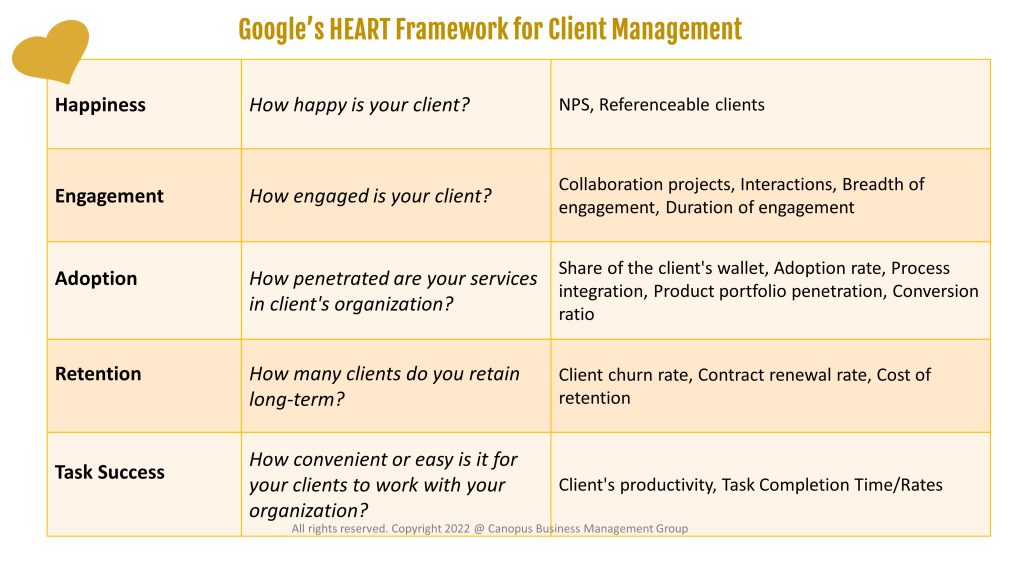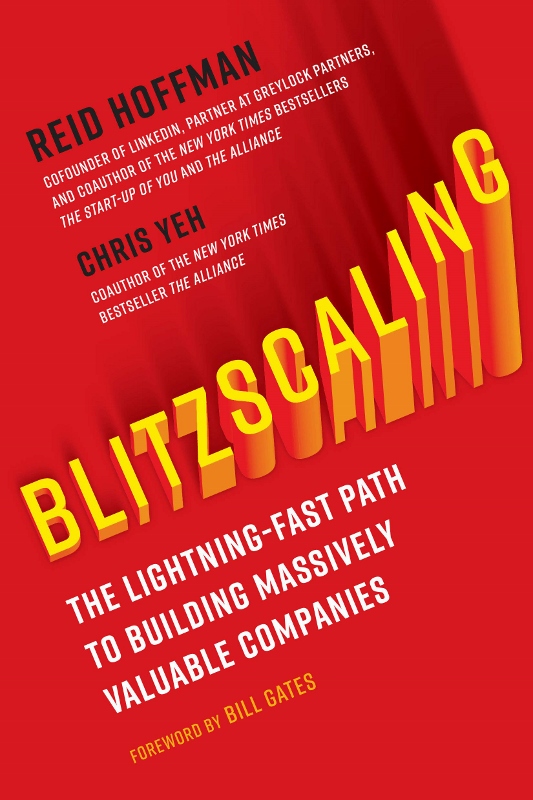
Sustaining client centricity can be difficult for a number of reasons, including:
- Resistance to change: Implementing a client-centric approach may require changes to existing processes and ways of doing things, which can be met with resistance from employees who are comfortable with the status quo.
- Lack of understanding: Without proper training and education, employees may not fully understand the benefits of a client-centric approach or how to implement it effectively.
- Limited resources: A client-centric approach may require additional resources, such as increased staff or technology, which may not be available.
- Lack of accountability: Without clear accountability and oversight, it can be difficult to ensure that a client-centric approach is being implemented and maintained.
- Difficulty in Measuring Success: Without clear metrics to measure the success of a client-centric approach, it can be difficult to evaluate its effectiveness and make adjustments as needed.
#nilakantasrinivasan-j #canopus-business-management-group #B2B-client-centric-growth #Client-centricity

There are several common ways to improve the existing account growth in B2B companies, including:
- Building strong relationships: Building strong relationships with existing customers is essential for growing their accounts. This can involve regularly communicating with customers, understanding their needs and goals, and going above and beyond to meet their expectations.
- Offering additional products and services: Another way to improve account growth is by offering additional products and services to existing customers. This can help to increase the value of each account, and can also help to cross-sell and up-sell additional products and services.
- Providing excellent customer service: Providing excellent customer service is also key to improving account growth. This can include responding promptly to customer inquiries, addressing customer concerns, and resolving problems in a timely and efficient manner.
- Offering customized solutions: Offering customized solutions to existing customers can help to increase the value of each account. This can include tailoring products and services to meet the specific needs of each customer, and developing specialized solutions that are not available to other customers.
- Implementing customer retention programs: Implementing customer retention programs can help to improve account growth. This can include loyalty programs, referral programs, and other incentives that encourage customers to continue doing business with a company.
- Regularly gathering customer feedback: Regularly gathering customer feedback is another way to improve account growth. This can include conducting surveys, focus groups, and other research to understand customer needs and preferences. This feedback can be used to improve the company’s products or services, and to develop strategies for retaining and growing existing customers.
They are all prescriptive. The question is, which one of these is relevant to your organization and why? That clearly depends on your current state, ground level challenges and growth aspirations. Only by implementing relevant strategies, B2B companies can work to improve the growth of existing accounts and drive sustainable growth for the company.
If you are looking for ways to improve your account growth, click here
#nilakantasrinivasan-j #canopus-business-management-group #B2B-client-centric-growth #Account-growth

Agile enterprises are customer centric because they prioritize the needs and goals of their customers in all aspects of their business. Agile methodologies, such as Scrum and Kanban, are designed to be flexible and responsive to change, which allows organizations to quickly adapt to the evolving needs of their customers.
In an agile enterprise, customer feedback is actively sought and incorporated into product development and decision-making processes. This allows the enterprise to continuously improve and deliver products and services that align with customer needs.
Additionally, Agile enterprises also tend to have a flat organizational structure, which allows for better communication and collaboration across teams and departments, enabling them to respond more quickly to customer needs. They also tend to use cross-functional teams, which are composed of individuals from different areas of the business, such as design, development, and marketing, to work together to deliver products and services that meet customer needs.
In summary, Agile enterprises are customer centric because they prioritize the needs of their customers, actively incorporate customer feedback, and continuously improve their products and services to meet those needs.
One example of how agility helped in client centricity is the case study of a large retail bank that implemented an Agile approach to managing their customer service operations.
The bank was facing a significant challenge in maintaining high levels of customer satisfaction, as their traditional, hierarchical structure was causing delays in responding to customer complaints and requests. Additionally, the bank was facing increased competition from fintech companies that were more agile and able to respond quickly to changing customer needs.
To address these issues, the bank decided to adopt an Agile approach to managing their customer service operations. They formed cross-functional teams composed of representatives from different areas of the business, such as customer service, IT, and compliance, and implemented daily stand-up meetings to ensure that everyone was aware of the most pressing customer issues.
The bank also began actively seeking customer feedback and incorporating it into their decision-making processes. They also implemented a system for tracking customer complaints and requests in real-time, which allowed them to quickly address and resolve issues.
As a result of these changes, the bank was able to significantly improve their customer satisfaction levels and reduce their customer complaint resolution time. The agility helped them respond to the changing customer needs in a timely manner. Additionally, the bank was also able to reduce costs and improve overall efficiency, which helped them better compete with fintech companies.
This case study shows how agility helped in client centricity by allowing the bank to respond more quickly to customer needs, improve customer satisfaction, and ultimately increase competitiveness.
One example of agile client centricity in a startup is the case study of a small software development company that specializes in building custom mobile apps for small businesses.
The company had struggled to retain clients in the past because they were not able to deliver products that met the unique needs of each business. The company decided to adopt an Agile approach to software development, which allowed them to be more flexible and responsive to the evolving needs of their clients.
The company began using Scrum, an Agile methodology, to manage their software development projects. They formed small, cross-functional teams composed of developers, designers, and project managers, and held daily stand-up meetings to ensure that everyone was aware of the most pressing client needs.
The company also began actively seeking client feedback and incorporating it into their development process. They implemented a system for tracking client requests and issues in real-time, which allowed them to quickly address and resolve problems.
As a result of these changes, the company was able to significantly improve their client retention rate. Clients were happy with the product as it met their needs and the company was able to deliver the product on time and on budget. Additionally, the company was able to reduce costs and improve overall efficiency, which helped them to better compete with larger software development companies.
This case study shows how agility helped in client centricity by allowing the company to respond more quickly to client needs, improve client satisfaction and ultimately increase competitiveness.
Here are a few simple ways to start incorporating Agile principles in a non-software environment:
- Start with small, cross-functional teams: Form teams that include representatives from different areas of the business, such as sales, marketing, and operations. This will ensure that everyone is aware of the most pressing customer needs and can work together to deliver solutions.
- Hold regular meetings: Hold daily or weekly meetings to discuss progress, identify any roadblocks, and ensure that everyone is on the same page.
- Prioritize customer feedback: Actively seek and incorporate customer feedback into decision-making processes. This will help ensure that products and services align with customer needs.
- Emphasize flexibility and adaptability: Be open to change and willing to pivot when necessary. Agile is all about being able to respond quickly to changing circumstances.
- Use visual management tools: Use visual tools, such as Kanban boards or task lists, to track progress and identify areas for improvement.
- Encourage collaboration and communication: Encourage open communication and collaboration across teams and departments.
- Test and Iterate: Continuously test and improve the process, gather feedback, and iterate.
It is important to note that Agile is a mindset and a set of principles, not a one size fit all methodology. Therefore, it’s important to tailor the approach to the specific needs of the organization and its environment.
#nilakantasrinivasan-j #canopus-business-management-group #B2B-client-centric-growth #Agile #Customer-centric
Blitzscaling is a book by the co-founders of LinkedIn, Reid Hoffman and Chris Yeh, an investor and an author, respectively. The book explores “blitzscaling,” a way to grow your startup quickly by taking big risks. Most of the concepts of Blitzscaling describe classical start-up setups in B2C or D2C. I’ve made an attempt to apply the principles to B2B.
One of the key techniques covered in the book on Business Model Innovation is about four growth factors and two growth limiters. They are new business models that challenge the status quo with unconventional ideas.
So the quest now is to understand how to drive growth in a B2B setup by using the principles of business model innovation as described in the Blitzscaling method.
Four Growth Factors
- Market Size
- Distribution
- High gross margins
- Network Effects
Two Growth Limiters
- Lack of Market Fit/Product/Service Offering
- Operational Scalability
Market Size
The segment and the type of client the organization wishes to target have to be narrowed down. But a common mistake noticeable in most companies now-a-days is that they cast their “small” net too narrowly.
For example, a B2B software services firm narrows its focus on ERP for the leather industry. While it sounds like a good definition of a target segment and the company may certainly find initial success, in the long run they are likely to run out of prospects. For example, Apple started off targeting the PC market, but today that is only 10% of their revenue. If they had remained focused on the “PC market,” we wouldn’t have iPhones today.
So the question to ask when you want high growth is:
Question yourself : How large is the market you’re targeting? Is it really reachable? What are TAM, SAM, and SOM?
Distribution
Even with a great product or service offering, without sufficient distribution, do you think the organization will be successful?
Essentially, distribution is the means through which you have access to your target market. Maruti Suzuki, the automotive market leader in India, is unbeatable merely because of its vastly spread distribution network. For B2B companies, this is about their access to the market.
Blitzscaling talks about two distinct ways to maximize distribution: leveraging existing networks and virality.
Can we leverage existing platforms to gain the exposure and traction necessary to reach many clients? Take the example of Paypal, whose growth blitzscaled when it provided easy payments on eBay. So consider if you should bank on an existing installed client base to build your product or service. For example, creating a product or service such as a plug-in or an add-on for customers on the SAP ecosystem or Microsoft. So simply look for a market leader with more than 50% market share and build something for their customers.
Next, consider virality, the process of one customer bringing in additional customers. A very simplified version will be referrals. But for someone to refer to your service or product, you need to consider what their incentive is. Yes, the superlative quality of your product or service is a prerequisite, but also consider the non-monetary value to your patrons.
High Gross Margins
This is common sense in business. But, when you consider this at the time of designing your product or service, you can build businesses with high margins. It’s quite okay if your current business model operates on a high volume, low margin business. Take the example of Amazon. Its profitability does not lie in its low-margin retailing but rather in its high-margin Amazon Web Services (AWS) cloud service.
Question yourself : Is your business generating gross margins as you expected? Are there assumptions that went wrong? Are there ways to drastically course correct?
Network Effects
Network effects are something very similar to Amazon’s flywheel concept, covered in my previous issue. This is typically a B2C concept. The network effect is essentially how an increased user base enhances the value for the users. For example, as more people use Instagram, existing users will find more value from the platform. The same applies to WhatsApp, mobile networks, etc.
While market size, distribution, and high gross margins are design factors to carve out a high-growth business model, network effects are all about sustaining and rapidly scaling that growth to the next level.
B2B companies usually isolate clients and treat each of them separately. Consider the benefits of your clients interacting with each other, sharing their business challenges, and learning from each other. For example, consider the McKinsey Technology Council. It brings together a global group of over 100 scientists, entrepreneurs, researchers, and business leaders, who research, debate, inform, and advise, helping executives from all sectors navigate the fast-changing technology landscape.
There are 5 types of network effects – Direct, Indirect, Two-sided, Local network and compatibility standards.
Question yourself : Is there additional value your clients are deriving from being your client, especially from each other?
Lack of Market Fit/Product/Service Offering
This is listed under limiting factors for blitzscaling growth. As you will realize, this is the dark side of “Market”- the first growth factor of Blitzscaling. From my experience, this is the single most limiting factor for most B2B organizations. Many feel that picking a market that is untapped and full of potential is a lot easier than trying to break into a crowded space. This is more about refinement and less about getting it right the first time. It is about continuous refinement. For example, Indigo Airlines started as a no-fringe airline, but you can’t say that any more.
Question yourself : Is the market satisfied with your product or service? What is missing?
Operational Scalability
Again, this is listed under limited factors and is likely to choke your growth. For example, OYO Rooms stumbled because its partner network lacked quality and consistency, the very same factors it leveraged early on. Similarly, Tesla cars are in demand since their initial launch, but due to the capacity constraints of their manufacturing facilities, they have not been able to meet demand.
Question yourself : What is limiting us to scale? What synergies do you derive in operations from scaling? Efficiency improvements, optimization, cost sharing, etc.
If you are struggling with defining your product or service offering, business model innovation, etc, please feel free to reach out for any assistance.
#nilakantasrinivasan-j #canopus-business-management-group #B2B-client-centric-growth #Blitzscaling #LinkedIn #Reid-Hoffman #Chris-Yeh
The instructor is very knowledgeable. The course is informative and well organized

Putting Google’s HEART framework to build your Client Centricity Program
A decade ago, Google’s researchers, Kerry Rodden, Hilary Hutchinson, and Xin Fu, published a paper on how to measure the UX of web applications. Their principal objective was to clarify how product goals can be mapped to metrics in order to improve the customer experience. This was the genesis of Google’s HEART framework.
Since then, this has gained popularity among product managers (PMs) and IT companies building products or applications. They use the HEART framework to improve UX. But I’m not going to talk about it in that context. Let’s take a step back and look at this HEART framework from the perspective of any business, and how we can use it to build client centricity.

What is Google’s HEART Framework?
HEART is an acronym for Happiness, Engagement, Adoption, Retention and Task. These are the five broad themes or lenses through which the success of client centricity and client management frameworks can be examined.
Happiness
How happy is your client? How happy are the decision-makers? How happy is the buyer of your service? How happy are the users of your services? How happy are the influencers?
While NPS is still a popular way to measure satisfaction, you can certainly explore other ways to collect quantitative data around satisfaction, for instance through referenceable clients.
Engagement
How engaged is your client in the short term? How much do users interact with a product or service?
We need to recognize that not all engaged clients are happy. For example, if they are reliant on your organization and you are failing to meet their expectations, their engagement with your organization will be high! They will have multiple reviews, too many reports, frequent visits to your site, etc.
Thus, measuring engagement alone can be misleading.
Engagement can also increase when you offer a wider range of products or services or multiple value additions. Mapping the client journey (CJM) can be helpful to improve positive engagement.
Relevant metrics would be collaboration projects, number of interactions, breadth of engagement (across different departments of the client’s organization), duration of such engagements, etc.
Adoption (Penetration)
How penetrated are your services in client’s organization? What is your share of wallet of the client’s business? How much are your existing clients willing to use your products, services, or applications? Are they regularly using it? Is it out of pressure or because they find it useful?
Relevant metrics can be the share of the client’s wallet, the adoption rate of your services, the adoption rate of new features, services, value adds, processes, integration between the client and your processes, the product ranges of clients where your services or products are used, the conversion ratio of sales, etc.
Retention
How many clients do you retain long-term?
Relevant metrics include client churn rate, contract renewal rate, cost of retention (discounts towards retention), etc.
Task
How convenient or easy is it for your clients to work with your organization? How complicated are the processes and policies? How agile is your work force’s mindset?
Prof. Clay Christensen introduced the concept of ‘Jobs-to-be-done’, where he stated that all clients and customers have jobs to be done, and it is about how we, as vendors, can make their lives easy. And clients (and their employees) would prefer those products or services that make their lives easier.
For example, your client wants you to change a design parameter for some specific reason, but your employees don’t easily accept the change. Instead, they resist, highlight difficulties, propose complicated solutions, put clients in bureaucratic loops, etc.
Metrics can be improvement in a client’s productivity (after your association), time to complete their tasks in your touchpoints, channels, or systems, etc.
I hope, by now, you can see the benefit of viewing your client centricity and client success program through Google’s HEART framework. If you are looking for any specific guidance in this area, please do contact me at Business.Support@collaborat.com
#nilakantasrinivasan-j #canopus-business-management-group #B2B-client-centric-growth #Google #HEART-Framework
Sign-up for collaborat newsletter


